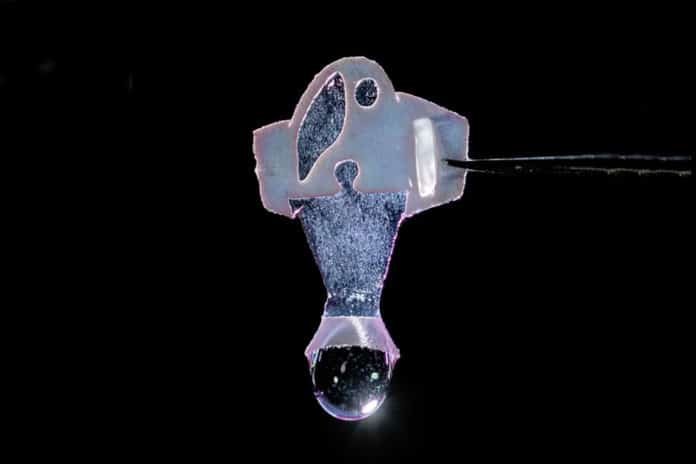A team of researchers at Harvard University and Emory University has developed the first fully autonomous biohybrid fish from human stem-cell-derived cardiac muscle cells. The artificial fish swims by recreating the muscle contractions of a pumping heart, bringing researchers one step closer to developing a more complex artificial muscular pump and providing a platform to study heart disease like arrhythmia.
The artificial fish was inspired by the shape and swimming motion of a zebrafish. The biohybrid zebrafish has two layers of muscle cells, one on each side of the tail fin that contracts and stretches in an alternating pattern. That stretch triggers the opening of a mechanosensitive protein channel, which causes a contraction, which triggers a stretch, and so on and so forth, leading to a closed-loop system that allows the fish to swim around under its own power for more than 100 days.
“By leveraging cardiac mechano-electrical signaling between two layers of muscle, we recreated the cycle where each contraction results automatically as a response to the stretching on the opposite side,” said Keel Yong Lee, a postdoctoral fellow at SEAS. “The results highlight the role of feedback mechanisms in muscular pumps such as the heart.”
The team says the biohybrid fish improves with age. Its muscle contraction amplitude, maximum swimming speed, and muscle coordination all increased for the first month as the cardiomyocyte cells matured. Eventually, the biohybrid fish was able to reach speeds and swimming efficacy similar to zebrafish in the wild.
Next, the team aims to build even more complex biohybrid devices from human heart cells.
“Our ultimate goal is to build an artificial heart to replace a malformed heart in a child,” said Kit Parker, senior author of the paper. “Rather than using heart imaging as a blueprint, we are identifying the key biophysical principles that make the heart work, using them as design criteria, and replicating them in a system, a living, swimming fish, where it is much easier to see if we are successful.”
